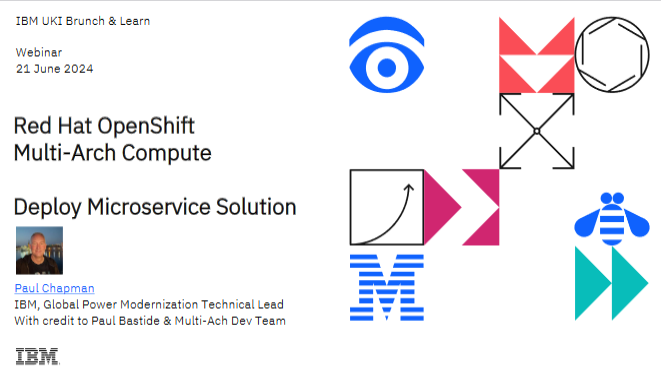In the ever-evolving landscape of cloud computing, flexibility and efficiency are paramount. IBM’s latest innovation in OpenShift technology – Multi-Architecture Computing – is set to revolutionize how we deploy and manage containerized workloads. Let’s dive into this game-changing feature and explore its potential impact on enterprise IT.
UKI B&L Webinar
Presentation
What is Multi-Architecture Computing?
Introduced in OpenShift 4.14 in November 2023, Red Hat OpenShift Multi-Architecture Computing allows different processor architectures, such as x86, Power, and ARM, to coexist within a single OpenShift cluster. This marks a significant departure from the previous approach, where each architecture required its own separate cluster.
Key Benefits
Simplified Management
One cluster to rule them all, reducing operational complexity.
Seamless Migration: Easily move workloads between architectures without cluster boundaries.
Cost Optimization: Leverage the strengths of different architectures without duplicating control planes.
Higher Density: Especially beneficial for Power systems, known for running more containers per core.
Real-World Application: The Sock Shop Demo
To showcase the power of multi-arch, we deployed a microservices-based e-commerce application called “Sock Shop” across x86 and Power nodes. This demo highlighted how easily workloads can be shifted between architectures, opening up new possibilities for optimizing application performance and resource utilization.
Advanced Scheduling Features
Multi-arch computing introduces powerful tools for controlling workload placement:
- Node Cordoning: Temporarily prevent scheduling on specific nodes.
- Taints and Tolerations: Fine-tune which workloads can run on particular architectures.
- Node Selectors: Explicitly define where certain containers should run.
Looking Ahead: OpenShift 4.16 and Beyond
Release 4.16 of OpenShift introduces the Multi-Arch Tuning Operator, further simplifying the management of these diverse environments. This development is particularly exciting for complex enterprise solutions like IBM’s Cloud Pak for Data, which are being adapted to leverage Multi-Arch Capabilities.
Getting Started
While the technology is new, resources are rapidly becoming available. IBM is working on a Red Book publication, and numerous tutorials, videos, and blog posts are already online. Early adopters are seeing success, with public references showcasing real-world implementations.
Conclusion
Multi-architecture computing in OpenShift represents a significant leap forward in containerized deployment flexibility. As organizations increasingly seek to optimize their IT infrastructure for various workloads – from AI/ML to traditional enterprise applications – the ability to seamlessly blend different processor architectures within a single cluster will become invaluable.

Leave a Reply